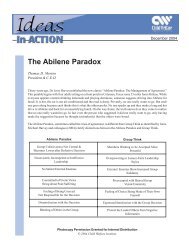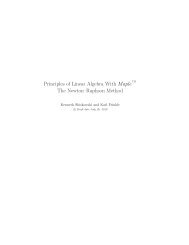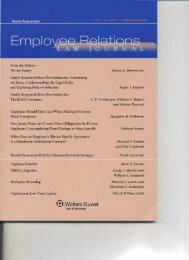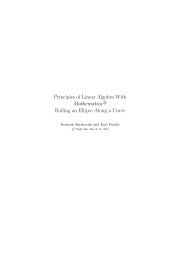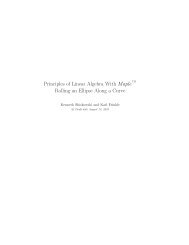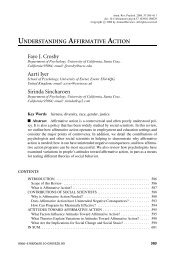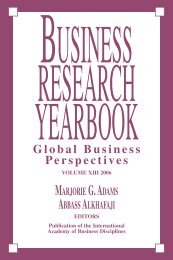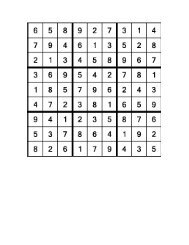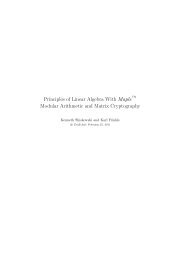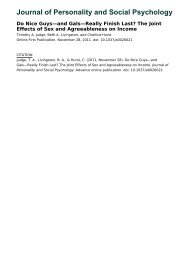www.SE.edu 1-800-435-1327 - Southeastern Oklahoma State ...
www.SE.edu 1-800-435-1327 - Southeastern Oklahoma State ...
www.SE.edu 1-800-435-1327 - Southeastern Oklahoma State ...
You also want an ePaper? Increase the reach of your titles
YUMPU automatically turns print PDFs into web optimized ePapers that Google loves.
56 <strong>Southeastern</strong> <strong>Oklahoma</strong> <strong>State</strong> University<br />
Baccalaureate Degrees and Requirements<br />
The bachelor’s degree is an academic title conferred on<br />
an individual in recognition of the successful completion of a<br />
three or four-year course of study. The title is awarded upon<br />
recommendation by the faculty of the University.<br />
The baccalaureate program is composed of three separate<br />
parts: general <strong>edu</strong>cation, specialized <strong>edu</strong>cation, and elective<br />
elements. In a typical program, the three parts will be approximately<br />
equal. In a traditional bachelor’s degree program, the<br />
part devoted to general <strong>edu</strong>cation will predominate, whereas<br />
in a professional program, specialized courses will consume a<br />
larger share of the total hours required for the degree.<br />
TYPES OF BACCULAUREATE<br />
DEGREES<br />
<strong>Southeastern</strong> offers three types of baccalaureate degrees:<br />
the Bachelor of Arts degree is awarded for successful<br />
completion of a program of study that is primarily liberal arts<br />
and sciences, the Bachelor of Science degree is awarded for<br />
successful completion of a program of study designed to lead to<br />
graduate study or entry into a particular profession; the Bachelor<br />
of (Specialty) degree is awarded for successful completion of<br />
a program of study that is designed primarily for entry into an<br />
occupational field.<br />
Undergraduate degrees are distinguished by the minimum<br />
amount of liberal arts and sciences required for each degree<br />
type as described below:<br />
A. At least 80 semester credit hours (or the equivalent)<br />
of the course work for the Bachelor of Arts (B.A.)<br />
degree shall be in the liberal arts and sciences.<br />
B. At least 55 semester credit hours (or the equivalent)<br />
of the course work for the Bachelor of Science (B.S.)<br />
shall be in the liberal arts and sciences.<br />
C. At least 40 semester credit hours (or the equivalent)<br />
of the course work for the Bachelor of (Specialty)<br />
shall be in the liberal arts and sciences. The<br />
Bachelor of (Specialty) is restricted to a small<br />
number of fields in which traditional national practice<br />
or demands of the field or discipline require that the<br />
degree title include the name of the profession or<br />
discipline.<br />
LIBERAL ARTS AND SCIENCES<br />
The liberal arts and sciences are defined as those traditional<br />
fields of study in the humanities, social and behavioral<br />
sciences; communication; natural and life sciences; mathematics;<br />
and the history, literature, and theory of the fine arts<br />
(music, art, drama, dance). Courses directed toward specific<br />
occupational or professional objectives, or courses in the arts<br />
which rely substantially on studio or performance work are not<br />
considered to be liberal arts and sciences for the purpose of this<br />
policy. Courses required for the General Education Program<br />
are not necessarily synonymous or mutually exclusive with the<br />
Liberal Arts and Sciences.<br />
Courses which apply toward fulfillment of the Liberal Arts<br />
and Sciences degree requirements are marked with a # in the<br />
title of the course (see Course Descriptions, page 162).<br />
GRADUATION AND CHANGES<br />
IN DEGREE REQUIREMENTS<br />
Students must meet all the requirements for a degree outlined<br />
in one catalog. The student may elect any catalog in force<br />
during his or her enrollment at the University, provided enrollment<br />
is continuous. A student who breaks enrollment (either<br />
voluntarily or by compulsion) for two consecutive semesters<br />
(excluding summer terms) may not elect a catalog earlier than<br />
the one in force at the time of re-entry. Under no circumstances<br />
may a catalog more than 10 years old be used.<br />
Notwithstanding the provisions in the above paragraph,<br />
students in Teacher Education programs seeking state teacher<br />
certification shall in all cases be subject to curriculum changes<br />
insofar as these are necessary to meet certification requirements,<br />
without reference to the dates on which these students<br />
entered college.<br />
From time to time, degree programs are deleted. When<br />
this happens, active students are given a deadline to complete<br />
the program. After the final deletion date for the program, the<br />
program is no longer viable. Any student (active or inactive)<br />
who fails to finish the requirements by the deadline will have<br />
to convert to an active degree program.



